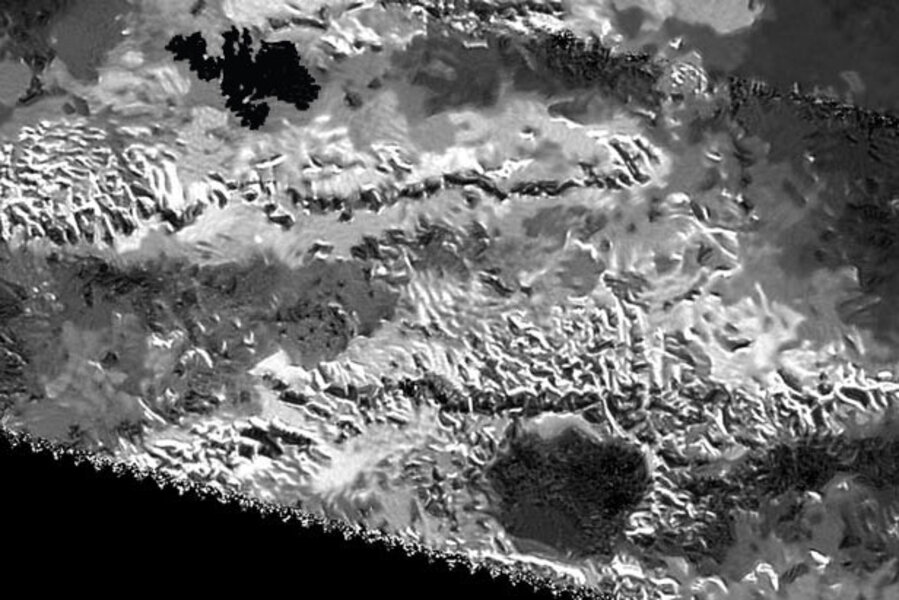The highest mountain on Titan is twice as tall as Maine's Mt. Katahdin
Loading...
NASA has discovered the highest peak on Titan, one of Saturn’s moons. The mountain is located in a range of ridges called the Mithrim Montes.
The peak was found by NASA researchers working on the Cassini mission that, since being launched in 1997, has spent the past 19 years studying Saturn and its 53 moons. Scientists used Cassini’s radar capabilities to peer beneath Titan's cloudy atmosphere to procure images and data from its surface.
While researchers say that many of the moon's highest peaks measure over 10,000 feet, this unnamed mountain is the highest they have found so far. At 10,948 feet high, Titan’s largest mountain would hold its own on Earth, comparable to Colorado's Elkhead Mountain range and twice as tall as Maine's Mt. Katahdin (5,270 feet). Still, it is nowhere near the height of the Earth’s largest mountains; it's only about half as tall as Alaska's Denali (20,310 feet), the highest peak in the United States. [Editor's note: An earlier version gave the incorrect elevation for Denali.]
Cassini researchers also say that this mountain is likely to be the highest point they find on the Titan. The tallest mountains on Titan are clustered near the moon’s equator.
Scientists are particularly interested in mountains and ridges on Titan because they can hold clues to the moon’s formation.
"There is lot of value in examining the topography of Titan in a broad, global sense, since it tells us about forces acting on the surface from below as well as above," said Jani Radebaugh of Brigham Young University in Provo, Utah, the lead researcher on the Cassini project, in a press release.
In addition to having mountains, Titan also experiences rain, and has rivers and other erosive features. But because Saturn and its moons are so far from the sun, its erosive processes are less strong than those on Earth, as there is less energy behind them.
While Earth’s crust rests on a mantle of molten rock, Titan’s crust rests on a deep ocean of water. The geological processes are similar, NASA researchers say, between the two. The liquid nature of the mantle on both Earth and Titan allows the crust to shift, move, and form features like the mountains and rivers discovered by Cassini.
There are some differences between Earth and Titan, however, that have to do with the composition of their bedrock. Because Titan’s crust is icy rather than rocky, its bedrock is softer and as such, its mountains will never be as high as Earth’s, though several are of respectable height.
Cassini researchers say that as much as they have learned thus far, there is still much more to learn from moons like Titan.
"As explorers, we're motivated to find the highest or deepest places, partly because it's exciting," said Dr. Radebaugh in the NASA press release. "But Titan's extremes also tell us important things about forces affecting its evolution."








